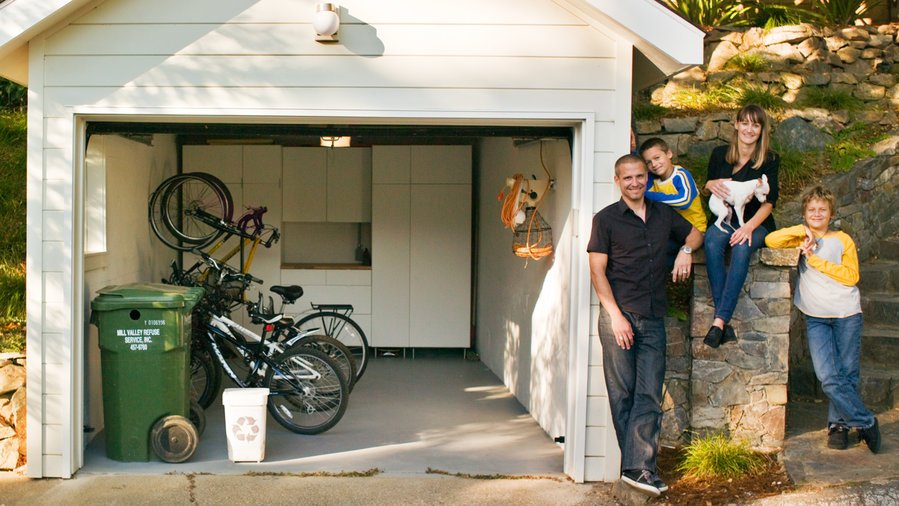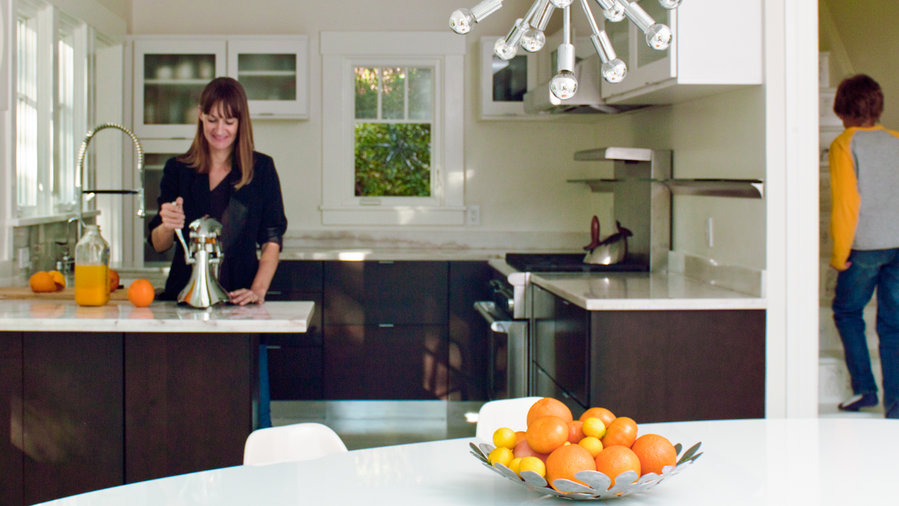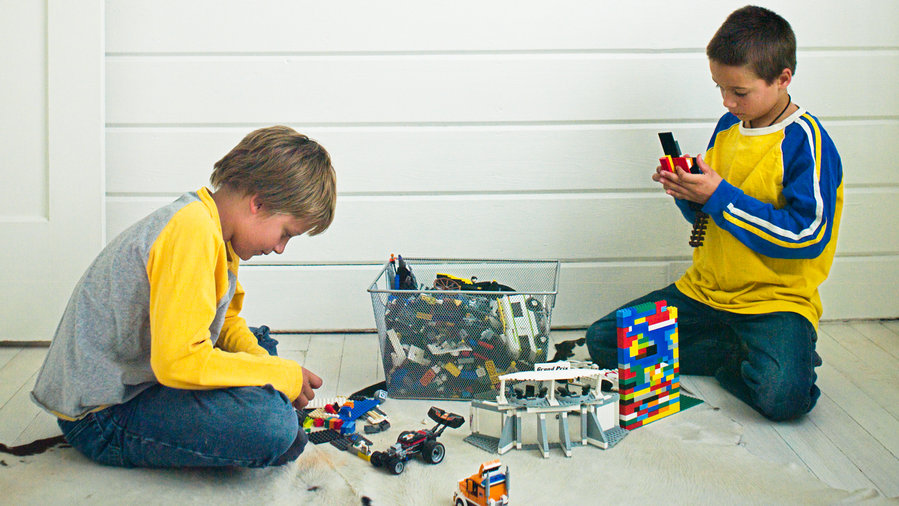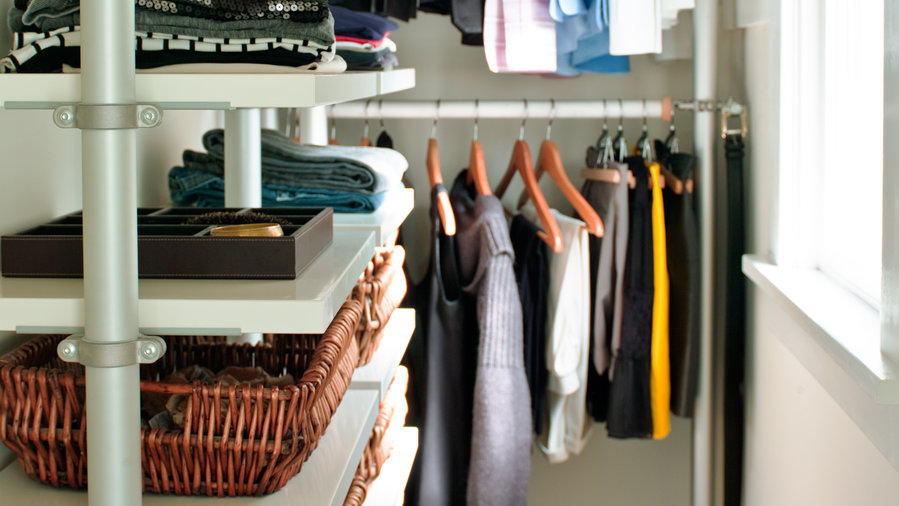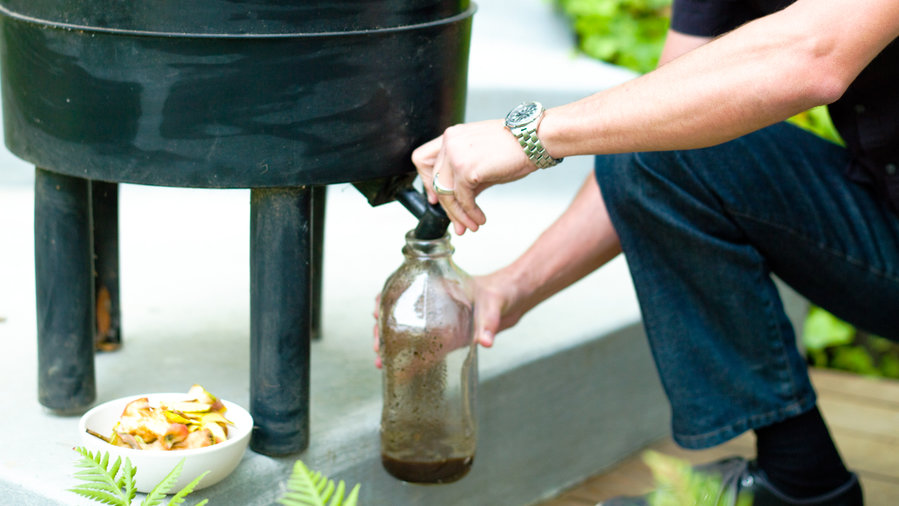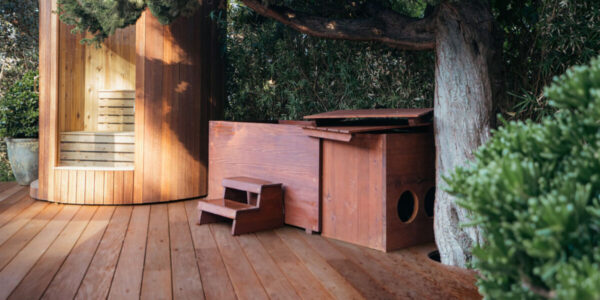Thomas J. Story
Meet the Johnsons
On trash day in Mill Valley, California, the Johnson home has no garbage. Nothing. There is a hefty compost bin and a teeny recycling bin—one that Béa Johnson is embarrassed exists at all. “So much recycling really goes to waste, so you need to try to reduce that too.”
Garbage, though, is something that happens rarely in this modern, minimalistically decorated house. That’s by day-to-day intention—to live simpler and lighter on the planet. Their quest started three years ago when Béa and husband Scott downsized from a 3,000-square-foot home to their current 1,400 square feet. But it had been on Béa’s mind ever since she’d nannied for a family that lost everything in a fire. Béa decided she wanted to truly love and use and know everything she kept in her home. “Even down to the vegetable peeler,” she says.
Béa documents her zero-waste lifestyle in her blog, The Zero Waste Home.
Thomas J. Story
Less is more
“When we started getting rid of things, it was kind of addictive,” she continues. “In a recession, people are inclined to keep things, but I feel the opposite. The less I have, the richer I feel. Stuff weighs you down.”
Even life memories and heirlooms. Béa says, “Photos are a good way to keep the memory of something without keeping it because of emotional attachment or the guilt of letting it go.” Put another way: Hang onto the photo of your grandmother in her fur coat, but if you never wear the coat, it’s just taking up space in your closet.
Scott and Béa still have “vices.” Makeup has been hard to purge for Béa, and English muffins for Scott—both come with some nonrecyclable packaging.
“We don’t do everything right,” she says. “We do have garbage. We do fly overseas to see my family in France once a year.” Despite the regressions, the way the family lives makes others at least sit up and take notice: Béa says one neighbor visited, remarking that the house is “futuristic and alien-like,” opening cupboards and asking, “Where’s all your stuff?”
Thomas J. Story
Kitchen
The kitchen looks eerily unlived in, yet Béa cooks every day.
What’s missing?
- Packaging in the pantry: The Johnsons go to the grocery store with their own jars and buy bulk snacks and other pantry supplies. “Some of the kids’ friends came over recently and said, ‘You have no food here,’ ” says Béa. “They didn’t recognize this as food since there weren’t any boxes.”
- Packaging in the fridge: The family shops with glass jars, fabric bags, and canvas totes, and returns containers for a deposit. Even cheese and meat go in jars. Cheese is purchased when it is cut, to avoid plastic wrap.
- Packaging in the freezer: Béa buys loaves of bread by the dozen from her grocer, carrying them in a pillowcase, which she then transfers to her freezer.
- Cluttered drawers: Cooking equipment is kept to a minimum and is multipurpose, like a cheese grater doubling as a zester.
- Paper towels: Clean up is done with microfiber cloths. “People are really attached to paper towels,” Béa says. “But they’re the easiest thing to give up.”
Try it
- The natural-foods aisle is great for dry-good staples and refillable shampoo, conditioner, and Dr. Bronner’s Magic Soap.
- To use glass jars, ensure that your store has a scale to measure their tare (empty) weight.
- Tips for wine: Scout for best local sources. Near San Jose, Guglielmo Winery offers refillable bottles for red wine.
Thomas J. Story
Living room
The living room has only what they need: a sofa, a video player, blankets, and pillows.
What’s missing?
- A single-use couch: The sectional couch here expands to a queen bed; pieces separate for extra seats; and a mirror-top tray turns seating into a table. To buy something similar, Google “adjustable sectional sofa.”
- Books: All come from the library.
- Photos, art: Memories get stale when photos are displayed for too long, Béa says. To keep the past fresh, albums come out yearly around the holidays. As for art, she hasn’t found anything she likes and can afford, although Béa sees the living wall as an ever-changing art piece.
Thomas J. Story
Playroom
In the playroom there are four bins of toys. The rule is simple: If the boys want something new to them, it needs to fit in the bins.
What’s missing?
- Lots of toys: If the boys outgrow something, it’s donated, sold, or re-gifted. Béa and Scott encourage friends and family to give gifts of experience rather than things. This year, their 10-year-old’s birthday gifts included a weekend of skiing and gift certificates to a climbing gym and the local ice cream shop.
Thomas J. Story
Bathroom
One medicine cabinet in the bathroom holds toiletries for the entire family.
What’s missing?
- Makeup case: Béa uses only four beauty products: face powder, eye cream, mascara, and eyeliner.
- Trash can: The family uses no Q-tips, cotton balls, or tissue (handkerchiefs sub in here). Toilet paper rolls come wrapped in paper, not plastic.
Try it
- To eliminate packaging, Béa mixes her own multi-purpose cleaner: 11/2 tsp. castile soap, 3 tsp. white vinegar, and 4 cups water.
- The family uses compostable toothbrushes.
Thomas J. Story
Closets
The house closets are enviable for their lack of clutter. Shopping is done only twice a year at a thrift store and replaces items that are stained, worn, or outgrown.
What’s missing?
- A bulging wardrobe: Everyone has a set number of items. For example, Béa caps out at 6 pairs of shoes, 7 tops, 7 pants, and 2 skirts (1 also wearable as a top). Same idea goes for Scott and the couple’s 9- and 10-year-old boys (each has 7 casual tops, 1 dress shirt, 4 bottoms, 3 pairs of shoes, and 1 pair of PJs per season).
- Shopping bags and shoe boxes: Secondhand items are preferred over new. Last April, for example, Béa spent only $40 replenishing clothes for her whole family (she even found nice $1 Abercrombie & Fitch tees for the boys).
Thomas J. Story
Really? No waste?
Béa and Scott Johnson answer some questions about how their household works.
Q/ Do you have a car?
A/ We have two cars, which we’ve had since before we started this lifestyle. Scott needs one for his job, and I need something once a week for errands. There’s no Zipcar in Mill Valley.
Q/ Do you have a TV?
A/ We do, for movies, but no television channels. We rent through Netflix—either online or by mail. In the return envelope, I put back that little strip of plastic that is intended to be thrown away. I’ve contacted Netflix, encouraging them to find another way.
Scott: I thought I’d miss sports TV—like ESPN or college football—but I’ve figured out it’s all online and we can stream it. If the cable company did à la carte, we’d be set.
Q/ Do you get junk mail?
A/ I’ve done dmachoice.org to get off direct mail lists like credit card applications, and there’s catalogchoice.org for catalogs. For first-class mail and third-class marked “address return requested,” you can write “refuse” on the envelope. For other third-class, you must track the sender down via phone or email and tell them to take you off their list. Every time I get something, I tackle it right away.
Q/ What about when your kids are sick?
A/ Though we have a neti pot [for flushing nasal passages with saline], sometimes we do have to buy medication. It’s less wasteful to purchase a small bottle, and the containers are recyclable. Instead of Band-Aids, we mostly use peroxide, then gauze and paper tape.
Q/ Living like this must take a lot of time.
A/ I save time. While other people are zigzagging the aisles of the grocery store, I shop the perimeter. The deli and cheese departments take extra time with my jars, but then I shop the bulk-foods aisle for all dry goods. I do the farmers’ market for produce. And I go to malls only occasionally, for shoes.
